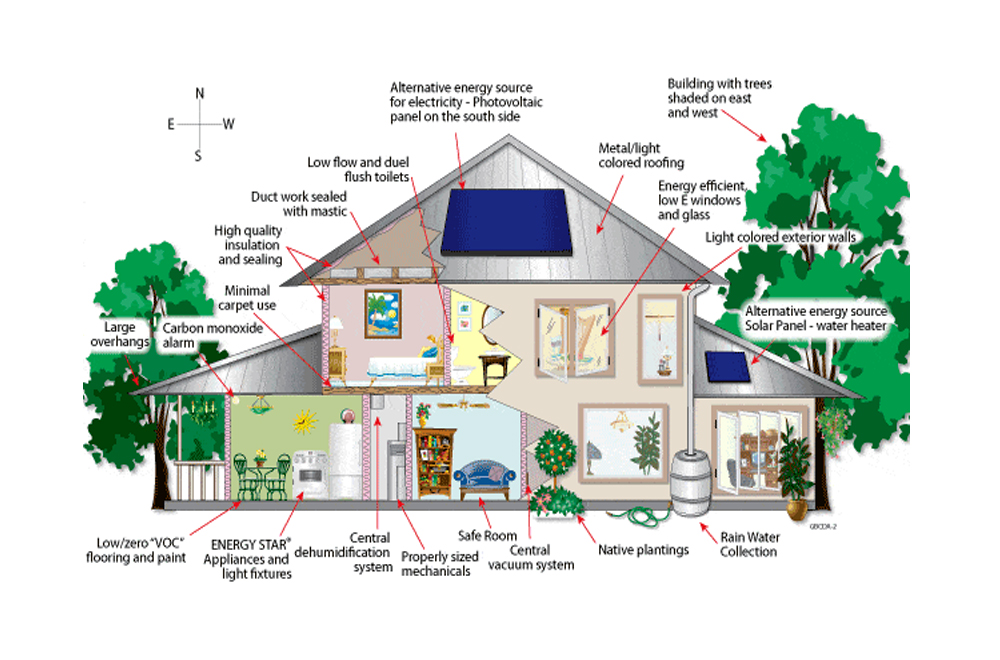Construction software marks a significant shift in project management, bringing digital automation to replace manual inefficiencies and setting a new standard for efficiency and accuracy in the industry.
Key Takeaways
- Construction software revolutionizes project management by transitioning from manual to digital and automating processes for enhanced efficiency and accuracy.
- It offers a suite of applications for planning, execution, and monitoring, addressing the complex challenges of modern construction projects.
- Benefits include streamlined project management, improved communication, better cost control, increased productivity, and real-time compliance and quality control data.
- Adopting construction software is a strategic move to boost efficiency, reduce risks, and increase profitability in the competitive construction industry.
Exploring the evolution of construction management reveals a landscape transformed by technology, where construction software benefits have become increasingly pivotal in driving efficiency and profitability.
Construction management has evolved significantly with the introduction of construction software, moving from manual, inefficient processes to automated, digital solutions. This change addresses the growing complexity and demands of the industry, making construction software indispensable for its comprehensive tools that enhance project management, communication, cost control, and overall productivity. Adopting construction software is not just about keeping up with technology; it’s a strategic approach to improving efficiency, managing risks, and increasing profitability in the ever-challenging construction landscape.
Table of Contents
ToggleConstruction Software and Core Functions
Construction software refers to a suite of digital tools designed to enhance the planning, execution, and management of construction projects. Its core aim is to streamline operations, improve efficiency, and ensure accuracy in various tasks. Key functions include project management, scheduling, document management, resource allocation, budgeting, cost control, and stakeholder communication. Construction software addresses common challenges like delays, cost overruns, and miscommunication by automating tasks and centralizing information sharing.
Types of Construction Software
- Project Management Software: Essential for coordinating scheduling, task assignments, progress tracking, and team collaboration.
- Design Software: Utilizes CAD and BIM technologies to enable architects and engineers to create precise digital models, enhancing planning and visualization.
- Estimation Software: Automates cost calculations for materials, labor, and equipment, streamlining the bidding process.
- Financial Management Software: Focuses on budgeting, expense tracking, and financial reporting to keep projects within budget and minimize financial risks.
- CRM Software: Manages client interactions from initial contact to project completion, improving customer satisfaction and retention.
- Compliance and Safety Software: Ensures adherence to industry regulations and safety standards, facilitating documentation and compliance processes.
Construction project management software stands out for its comprehensive capabilities among the various types of construction software available, such as design and estimation tools.
Streamlining Project Management
Construction software streamlines project management, converting complex tasks into manageable operations. It enables comprehensive oversight from start to finish via a unified platform, facilitating setting timelines, task assignments, progress tracking, and on-the-fly adjustments to schedules.
Enhancing Project Planning and Scheduling
The software provides tools for creating detailed project plans, including tasks, milestones, and dependencies. It features advanced scheduling to allocate resources efficiently. It automates routine updates and reminders, reducing administrative tasks for project managers and allowing them to concentrate on critical project aspects. For a deeper understanding of its impact on material and cost estimation, additional insights are available in a detailed explanation of takeoff software.
Real-Life Examples or Case Studies
- High-Rise Construction Project: A significant construction firm utilized project management software to coordinate the development of a high-rise building in a metropolitan area. The software enabled the project team to synchronize their efforts across different stages, from excavation and foundation laying to constructing structural elements and installing electrical and plumbing systems. The result was a 20% reduction in completion time and a 15% decrease in costs due to synchronized efforts and minimized errors.
- Residential Development Project: A residential construction company adopted software to manage multiple housing projects simultaneously. The software’s scheduling and resource allocation capabilities allowed for seamless coordination between subcontractors, leading to a significant decrease in scheduling conflicts and idle time. The project was completed ahead of schedule, with an increased client satisfaction rate due to the timely and transparent communication facilitated by the software.
Enhancing Communication and Collaboration
How Construction Software Enhances Collaboration
Construction software provides essential tools to improve communication and collaboration in the fast-paced construction environment.
- Centralized messaging platforms enable seamless, real-time communication across all team members, from onsite workers to office staff.
- Document sharing and management features ensure access to up-to-date project documents like plans, specifications, drawings, and reports, minimizing the risk of errors from outdated information.
- Collaborative Workspaces: Virtual workspaces allow teams to collaborate on documents, plans, and schedules in real time, making collective decisions faster and more efficiently.
- Mobile Accessibility: Construction software often comes with mobile capabilities, ensuring field workers stay informed about project changes, enhancing connectivity and responsiveness.
Impact on Project Timelines and Efficiency
Integrating these communication tools within construction software significantly impacts project timelines and overall efficiency. Centralized communication platforms ensure that information is disseminated quickly and accurately, reducing downtime and delays caused by miscommunication. For instance, immediate notifications of schedule changes or project updates allow teams to adjust their work plans on the fly, maintaining project momentum.
Moreover, enhanced collaboration tools mean decision-making is faster and more informed, as stakeholders can easily share insights, feedback, and approvals. This not only speeds up the project lifecycle but also enhances the quality of the work, as issues can be identified and resolved promptly.
Improving Cost Management and Budgeting
Enhancing Cost Estimation Accuracy
Construction software features advanced estimation tools that automate the calculation of costs for materials, labor, equipment, and overheads. It generates precise cost projections by incorporating historical data, current market rates, and project-specific variables. This accuracy helps set realistic budgets, prepare competitive bids, and confidently negotiate contracts.
Managing Financial Risks and Controlling Costs
Construction software provides a comprehensive financial overview, allowing project managers to compare actual expenses against budgeted costs in real time. This capability enables the early identification and correction of budget variances and potential overruns. An integral part of financial oversight in construction projects involves managing cash flow in construction effectively. Features for managing change orders, tracking commitments, and forecasting future costs further enhance financial risk management.
Boosting Financial Performance
The software identifies opportunities for efficiency gains, such as waste reduction, resource optimization, and improved supplier negotiations. Construction software protects profit margins by maintaining tight control over project costs and enhancing operational efficiency. It supports the financial growth of construction businesses.
A critical review of construction software cost savings demonstrates its role in keeping projects within budget while maximizing profitability.
Boosting Productivity and Efficiency
Construction software significantly enhances productivity and efficiency in the construction industry by automating tasks and streamlining workflows. This saves time, reduces human error, and eliminates unnecessary delays.
Key Features
- Task Automation: Routine tasks like data entry, time tracking, and progress reporting are automated, freeing up time for more critical activities.
- Workflow Streamlining: Standardized processes for change orders, approvals, and document management keep projects moving smoothly.
- Integration Capabilities: The software integrates with other systems, such as accounting and ERP, ensuring seamless information flow and operational efficiency.
Improving Construction Efficiency with Software
Automating tasks and streamlining workflows lead to a more efficient project lifecycle, enabling project managers to generate reports and make informed decisions quickly. Automated alerts keep everyone on track by notifying stakeholders of important updates or milestones. The result is faster project delivery and improved work quality, as team members can devote more time to their areas of expertise, enhancing the overall project outcome.
Ensuring Compliance and Quality Control
Construction software is essential for ensuring compliance with regulatory and safety standards, a crucial aspect of the construction industry where non-compliance can lead to significant penalties and reputational damage. The software integrates compliance features into project workflows, aiding in managing risks effectively.
Compliance Features
- Regulatory Compliance: It updates to reflect the latest regulations, ensuring projects comply with current laws, including building codes, environmental regulations, and labor laws.
- Safety Standards: The software includes tools for managing site safety protocols, tracking incidents, and maintaining accessible safety documentation.
- Document Control: It supports extensive documentation requirements, facilitating easy creation, storage, and retrieval of documents for audits and inspections.
Quality Control Support
- Quality Assurance Plans: Construction software enables the creation and implementation of quality assurance plans to ensure work meets set standards.
- Issue Tracking: It offers features to log, track, and manage issues or defects, addressing them promptly to avoid impacting project quality.
- Performance Analytics: The software analyzes project data to identify trends and improvement areas in quality control processes.
Construction software’s role extends beyond compliance to enhance quality control throughout the project lifecycle. This comprehensive approach mitigates legal and safety risks and upholds high-quality standards, reinforcing a construction business’s reputation for reliability and excellence.
Leveraging Real-Time Data and Analytics in Construction
The construction industry’s shift towards a data-driven approach emphasizes the importance of real-time data and analytics in achieving project success. Construction software provides teams instant access to project status, resource allocation, and performance metrics, revolutionizing decision-making and project management.
Real-Time Insights for Immediate Impact
Real-time monitoring enables swift adjustments to keep projects on track and within budget. It allows for optimizing resources—manpower, materials, and machinery—based on current data, enhancing efficiency and productivity. Performance metrics offer insights into project operations, identifying areas for improvement.
Data-Driven Decision-Making
Construction software facilitates decisions based on accurate, up-to-date information, reducing reliance on guesswork. Identifying issues, such as tasks falling behind schedule or budget overspending, enables prompt corrective action. This data-driven approach improves operational efficiency, cuts costs, and shortens project timelines, fostering a culture of continuous improvement and ensuring decisions serve the project’s best interests.
Competitive Advantage in the Market
In the competitive construction industry, adopting software provides a significant edge, enabling firms to excel in innovation and efficiency. This technology allows companies to deliver higher-quality projects more efficiently and at lower costs, distinguishing them in the market and demonstrating their commitment to technological advancement. The strategic implementation of construction software for small business operations can catalyze a transformation, positioning these entities competitively in the market.
Moreover, for small business owners, making small construction businesses profitable involves leveraging such software to optimize operations and enhance financial performance.
Leadership in Innovation
Construction software positions companies as industry leaders, enhancing their ability to execute complex projects with agility and signaling their forward-thinking approach to clients and competitors. Evaluating the construction software ROI improves project outcomes and elevates a company’s market standing and client satisfaction.
Industry Recognition
Testimonials from leading construction firms highlight the pivotal role of construction software in streamlining operations, accelerating project delivery, and enabling data-driven decision-making. These advantages contribute to a stronger industry reputation and the potential for securing more projects.
Integrating construction software into operations offers construction companies a pathway to improve their competitive position. By leveraging the software’s capabilities for real-time analytics and operational efficiency, firms can set new industry standards for excellence and innovation.
Conclusion: Transforming Construction Management with Software
The construction industry’s adoption of construction software represents a significant shift towards enhanced efficiency, accuracy, and profitability. This technology provides a holistic solution to the complex challenges of construction projects, including streamlined project management, improved communication, and effective cost control. Additionally, task automation, real-time data access, and strengthened compliance and quality control processes highlight the critical role of construction software in modern construction management.
Competitive Advantage
Utilizing construction software offers a substantial competitive edge, which is essential in the dynamic construction industry. It enables innovation, boosts efficiency, and ensures successful project delivery, positioning companies as leaders and making them more attractive to potential clients.
Integrating construction software is crucial for construction businesses seeking to excel in the evolving industry landscape. This strategic move can redefine project management, execution, and delivery, fostering growth and success. We encourage exploring various software options to find the best fit for different project needs and sharing experiences within the industry to highlight the benefits of this technological transformation. Engaging in this dialogue can motivate others to modernize their practices, driving collective advancement and success in construction management.





